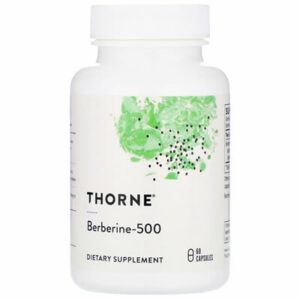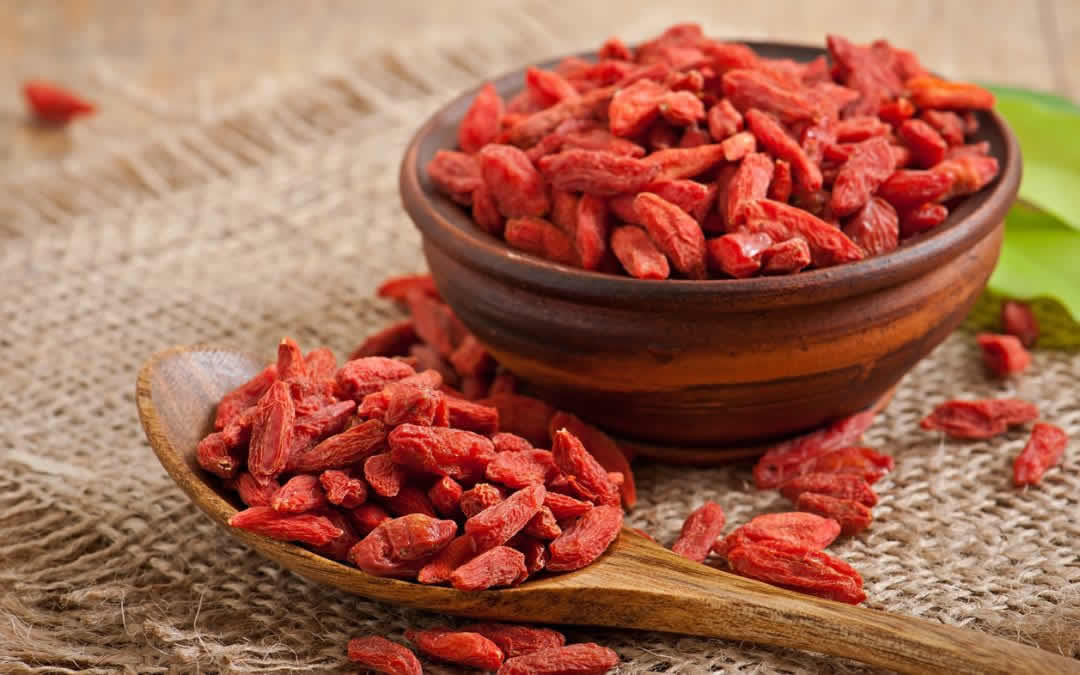Berberine is an alkaloid found in the plants of the Berberidaceae, Ranunculaceae, and Rutaceae plants, and is considered to be one of the few supplements that are as effective as drugs. Do you know the berberine benefits and side effects?
What is the effect of using berberine? Are there any side effects and contraindications? For more details, see the article
Table of Contents
What is berberine?
Berberine is an isoquinoline alkaloid extracted from the rhizomes of plants (yellow in appearance and tastes bitter). It is found in the roots, stems, bark, and fruits of many medicinal plants. It is commonly found as Berberis/Berberis vulgaris (Berberidaceae), Coptis/Coptis Chinensis (Ranunculaceae), Phellodendron/Phellodendron amurense (Rice spice), and heart leaf green cow gall/Tinospora cordifolia (Meliaceae).
To date, berberine has been used as an over-the-counter drug in the clinical treatment of diarrhea, dysentery, stomatitis, and hepatitis.
In addition, berberine has a wide range of pharmacological effects and is considered to have effects on the treatment of central nervous system diseases, diabetes, cancer, cardiovascular diseases, depression, hypertension, hypercholesterolemia, etc.
What are the benefits of berberine?
1. Berberine benefits type 2 diabetes
Diabetes mellitus is a chronic metabolic disorder characterized by persistent hyperglycemia, which may be due to impaired insulin secretion or resistance to the peripheral effects of insulin, or both.
The most common symptoms include thirst, increased urination, fatigue, bacterial and fungal infections, delayed wound healing, numbness and tingling in the hands and feet, and blurred vision.
Prolonged hyperglycemia may increase: the incidence of hypoglycemia, diabetic ketoacidosis, hyperosmolar state, coma, coronary artery disease, peripheral artery disease, and cerebrovascular disease.
A systematic literature review and meta-analysis (including 28 randomized controlled trials with a total of 2313 type 2 diabetic patients) pointed out that compared with the control group, berberine has lower fasting blood glucose (FPG) and postprandial blood glucose (PPG) ) And the effect of glycated hemoglobin (HbA1c) levels, especially in subjects whose treatment lasts for less than 90 days, whose daily dose is between 1.5 g and 2 g, and whose age is less than 60 years old.
In addition, the effect of berberine combined with hypoglycemic drugs will be better than that of drugs alone or berberine.
*Conclusion: Berberine has the effect of regulating blood sugar, but it is limited by the heterogeneity of the studies included, and more large-scale experiments with the accurate design are needed to corroborate
2. Berberine benefits hyperlipidemia
Dyslipidemia can be roughly divided into simply elevated cholesterol, simply elevated triglyceride, and both. Risk factors include high-saturated or trans-fat diets in addition to primary factors, Lack of exercise, smoking, obesity, and genetic inheritance.
Secondary factors include biliary obstruction, chronic kidney disease, type 2 diabetes, hypertension, and hypothyroidism, and drugs such as diuretics, cyclosporine, and glucocorticoids may also cause elevated cholesterol levels.
Approximately 31 million American adults have a total cholesterol level of more than 240 mg/L, which makes them twice as likely to have heart-health-related diseases as the normal population.
A systematic literature review and meta-analysis (including 16 randomized controlled trials, a total of 2147 patients with dyslipidemia) pointed out.
Oral berberine (daily doses ranging from 600 mg to 1500 mg, treatment time ranging from 2 months to 24 months) can significantly reduce total cholesterol (TC), low-density lipoprotein cholesterol (LDL-C) and triacid Glycerol esters (TG) also increase high-density lipoprotein cholesterol (HDL-C) levels.
In addition, there was no significant difference in the incidence of adverse events between the berberine group and the control group.
*Conclusion: Whether it is used alone or in combination, berberine can bring positive help to dyslipidemia, but it is limited by the high heterogeneity and high risk of bias in the included trials. More rigorous research is still needed to corroborate it.
3. Berberine benefits non-alcoholic fatty liver disease
Nonalcoholic fatty liver disease is the liver manifestation of metabolic syndrome, which is characterized by the deposition of fat in the cytoplasm of liver cells without obvious drinking or other important liver damage factors, accompanied by insulin resistance, Disorders such as lipid metabolism are the main causes of chronic liver disease.
Non-alcoholic fatty liver affects about 30% of ordinary adults and up to 60% to 70% of patients with diabetes and obesity. It is one of the causes of hepatocellular carcinoma.
Improving lifestyle and exercise control is still the focus of non-alcoholic fatty liver disease treatment, however, patients often have difficulty sustaining because the effect requires long-term observation.
A literature meta-analysis (including 6 randomized controlled trials, a total of 501 patients with non-alcoholic fatty liver disease) pointed out.
Compared with the control group, oral berberine (dose between 0.3 g to 0.5g, duration of 12 to 16 weeks) can reduce total cholesterol (TC), low-density lipoprotein cholesterol (LDL-C), alanine aminotransferase ( ALT), 2 hours postprandial blood glucose (2hPG), glycated hemoglobin (HbA1c).
In addition, subgroup analyses found that either berberine alone or combined drugs can effectively reduce triglyceride (TG).
*Conclusion: For non-alcoholic fatty liver disease, the use of berberine has a positive effect on the improvement of blood lipids, blood sugar, and liver function, but it is limited by the small sample size, short duration, and research quality factors. More rigorous research is still needed to confirm Its clinical benefits.
4. Berberine benefits polycystic ovary syndrome
Polycystic ovary syndrome is the most common endocrine disease of women of childbearing age. Its diagnosis is based on the following criteria, such as excessive male hormones (determined by excessive total testosterone or free testosterone or hairiness); ovarian dysfunction (Characterized by oligomenorrhea and chronic anovulation), and specific polycystic ovary morphology was detected.
In addition to the symptoms of infertility, acne, and hairiness, patients also have obvious metabolic abnormalities, which may increase diabetes and cardiovascular risk.
A systematic literature review and meta-analysis (including 9 randomized controlled trials of polycystic ovary syndrome with insulin resistance) pointed out.
Berberine and antidiabetic drugs: metformin has no significant difference in reducing insulin resistance, improving glucose and lipid metabolism, and improving reproductive endocrine.
In addition, hormonal therapy drugs: Cyproterone acetate (CPA) combined with berberine is superior to drugs used alone in improving reproductive endocrine indicators.
*Conclusion: For polycystic ovary syndrome with insulin resistance, the use of berberine may be of positive help, but limited by the small sample size, more well-designed large-scale studies are still needed to confirm its effectiveness and safety.
5. Berberine increases Helicobacter pylori eradication rate
Helicobacter pylori (H. pylori) is a gram-negative microscopic airborne bacterium that is closely related to gastric mucosal cells and infects nearly 50% of the world’s population. It is classified as a class by the World Health Organization. Carcinogens.
The clinical manifestations of Helicobacter pylori infection are as follows: (1) chronic gastritis, which occurs in almost all patients, most of them are asymptomatic (2) duodenal ulcer, accounting for 10% to 15% of the infected population, (3) gastric ulcer/adenocarcinoma, in 1 Gastric cancer develops in% to 3% of infected people, (4) gastric mucosa-associated lymphoid tissue lymphoma (MALToma), accounting for 0.1% of infected people.
A meta-analysis (including 13 randomized controlled trials, a total of 2048 Helicobacter pylori patients) pointed out that whether through biopsy or urea breath test, berberine combined with triple therapy can improve pylorus Eradication rate of Helicobacter and reduce the occurrence of total adverse reactions (especially nausea and diarrhea).
*Conclusion: Berberine combined with triple therapy can increase the eradication rate of Helicobacter pylori and reduce the incidence of treatment-related adverse reactions, but limited by the low methodological quality of the included studies, more studies are needed to corroborate.
Are there any side effects of berberine?
Berberine is highly safe for most adults who are in good health and used at the appropriate dose.
However, side effects or adverse reactions that have been reported include abdominal cramps, diarrhea, flatulence, constipation, stomach pain, hypotension, dyspnea, flu-like symptoms, and myocardial damage (especially at high doses).
Safety precautions
1. Do not use it for pregnant women, breastfeeding women, infants, and young children. It may cause kernicterus in newborns. Nuclear jaundice is a rare brain injury that often occurs in newborns with severe jaundice.
2. Please take caution when taking hypoglycemic drugs or diabetic patients, because it has a hypoglycemic effect and may cause hypoglycemia.
3. Please take caution when taking blood pressure-lowering drugs or patients with hypertension. Because of the effect of lowering blood pressure, hypotension may occur.
4. Do not use with cyclosporine, it may reduce the speed of the body to decompose cyclosporine and increase the occurrence of side effects of drugs.
5. Do not use with drugs that need to be metabolized by cytochromes P450, which may affect the efficacy of drugs or enhance the side effects of drugs. Common drugs are as follows:
- Macrocyclic antibiotics (clarithromycin, erythromycin)
- Anti-arrhythmic drugs (quinidine)
- Benzodiazepines (alprazolam, clobazam, clonazepam)
- Immunomodulators (cyclosporine, tacrolimus)
- AIDS antiviral drugs (atazanavir, cobicistat, darunavir, fosamprenavir, indinavir)
- Anti-histamine (chlorpheniramine)
- Calcium channel blockers (amlodipine, diltiazem, felodipine, nifedipine, verapamil)
- HMG CoA reductase inhibitors (atorvastatin, lovastatin, simvastatin)
- Estradiol, testosterone, hydrocortisone
How to eat berberine? What is the dosage?
In the literature, the dosage of berberine is about 900 to 1500 mg per day, which can be taken with meals or shortly after meals
Due to the short half-life, stable blood levels can be achieved by dispersing the dose several times a day (for example 500 mg each time, taken 3 times a day).
Where to buy the berberine brand recommended by most people?
In recent years, food safety problems in various countries have exploded, and it is not healthy but black-hearted products that everyone spends on. Therefore, European and American products with relatively strict quality control have become popular products.
And iHerb.com is a large-scale medical cosmetics e-commerce company in the United States. It has a high satisfaction rate of 97% in the evaluation of Google customers. It provides global home delivery so that you can buy it without risking buying fakes through purchasing high-quality health products.

